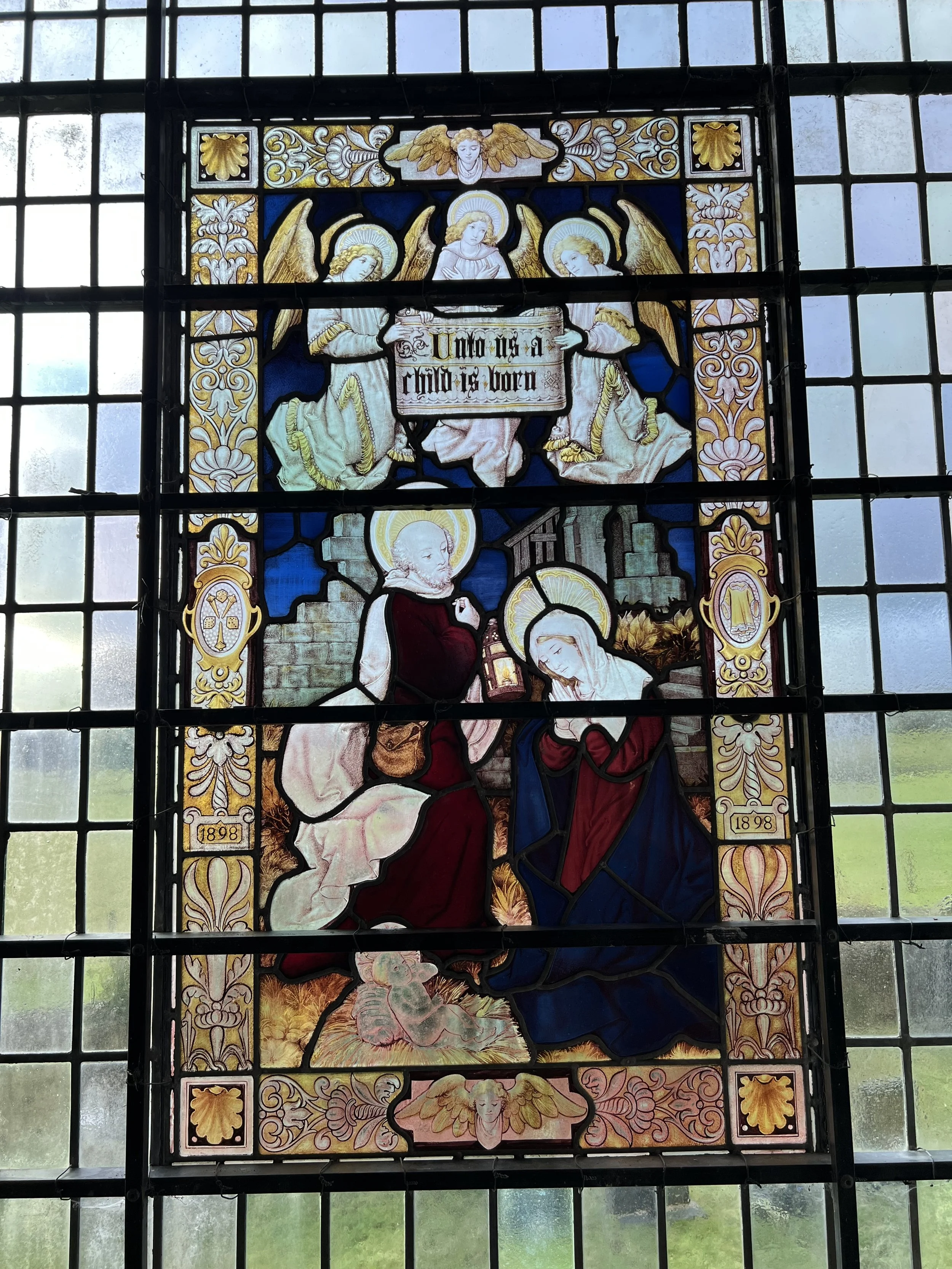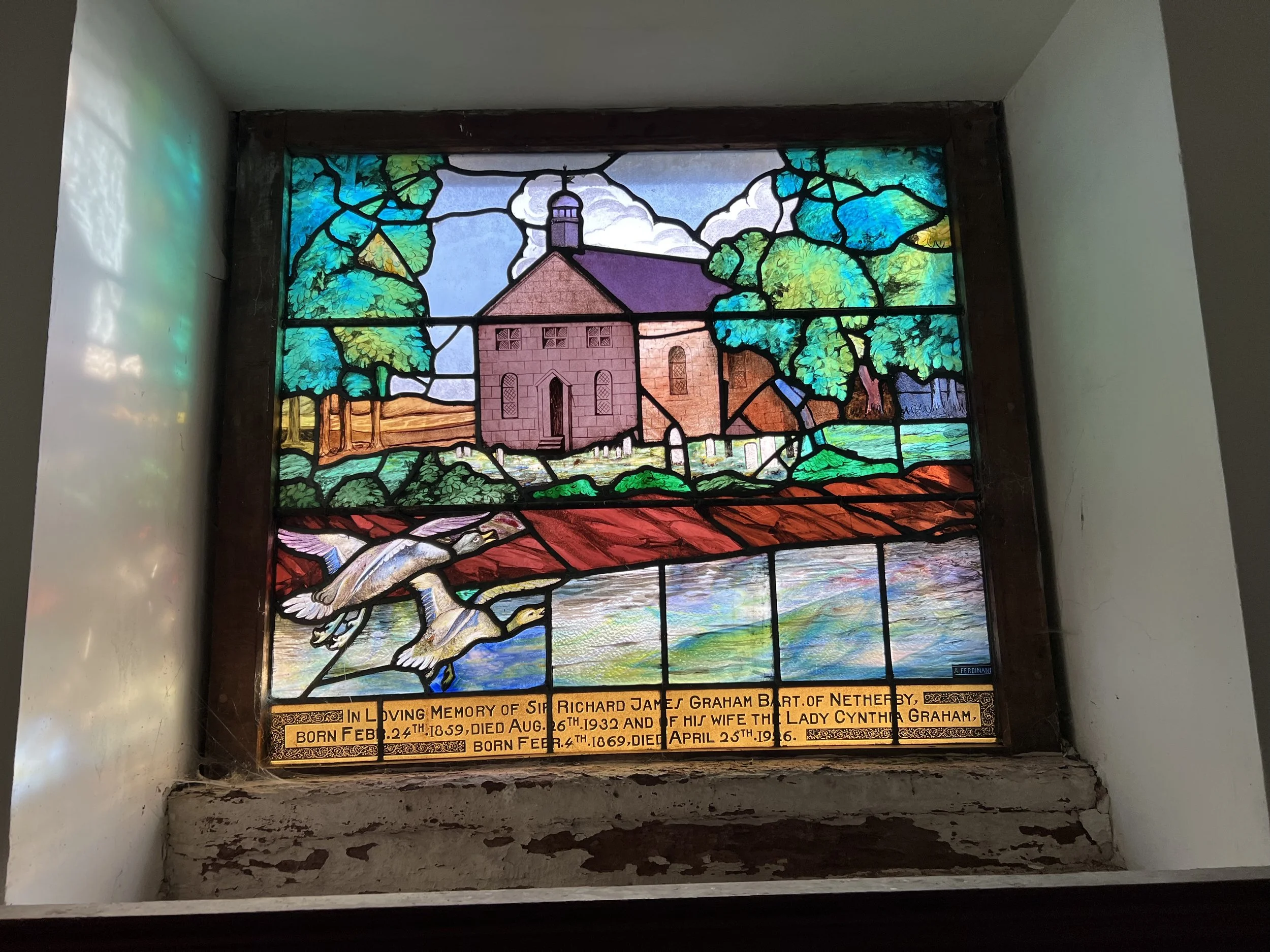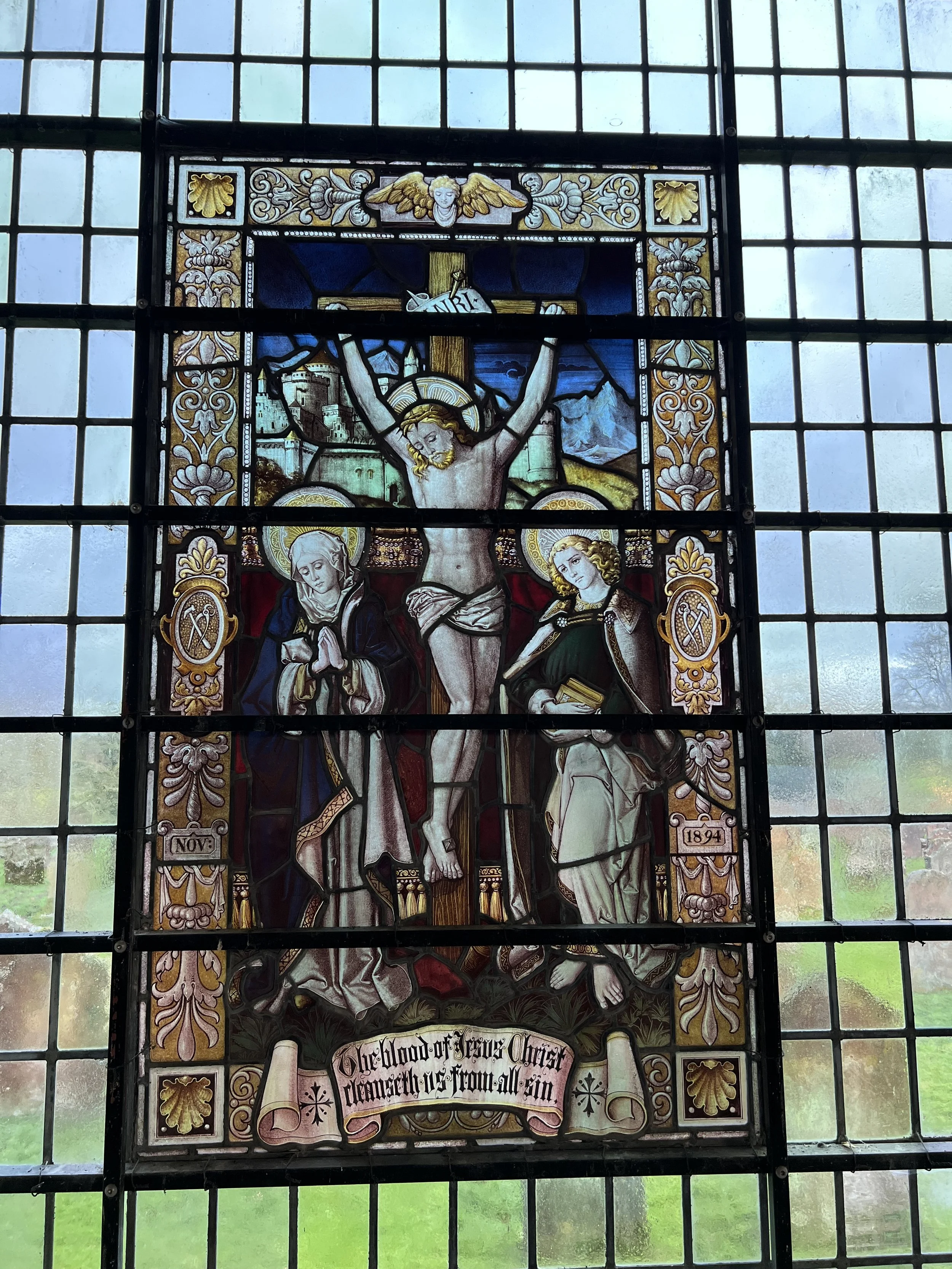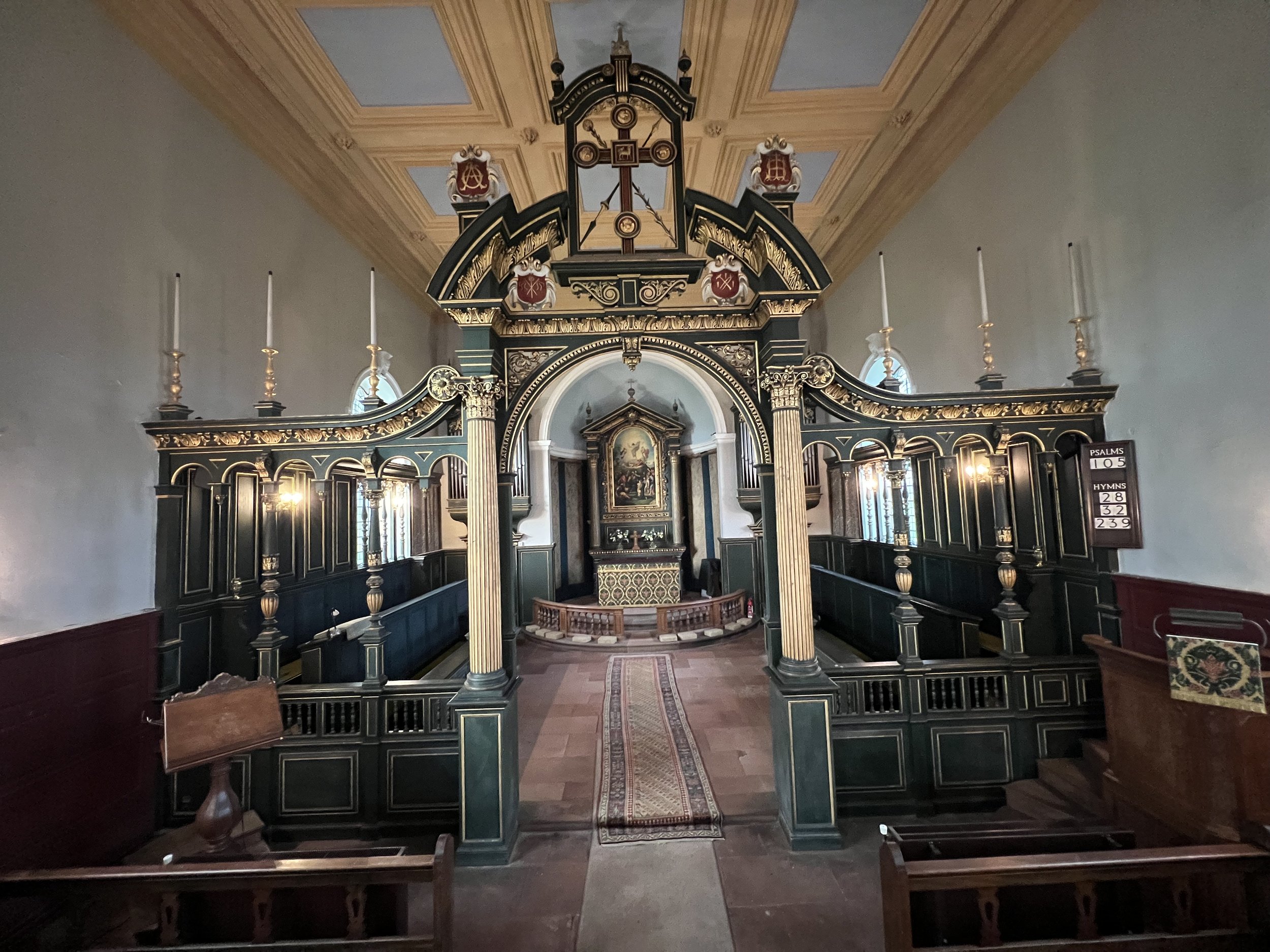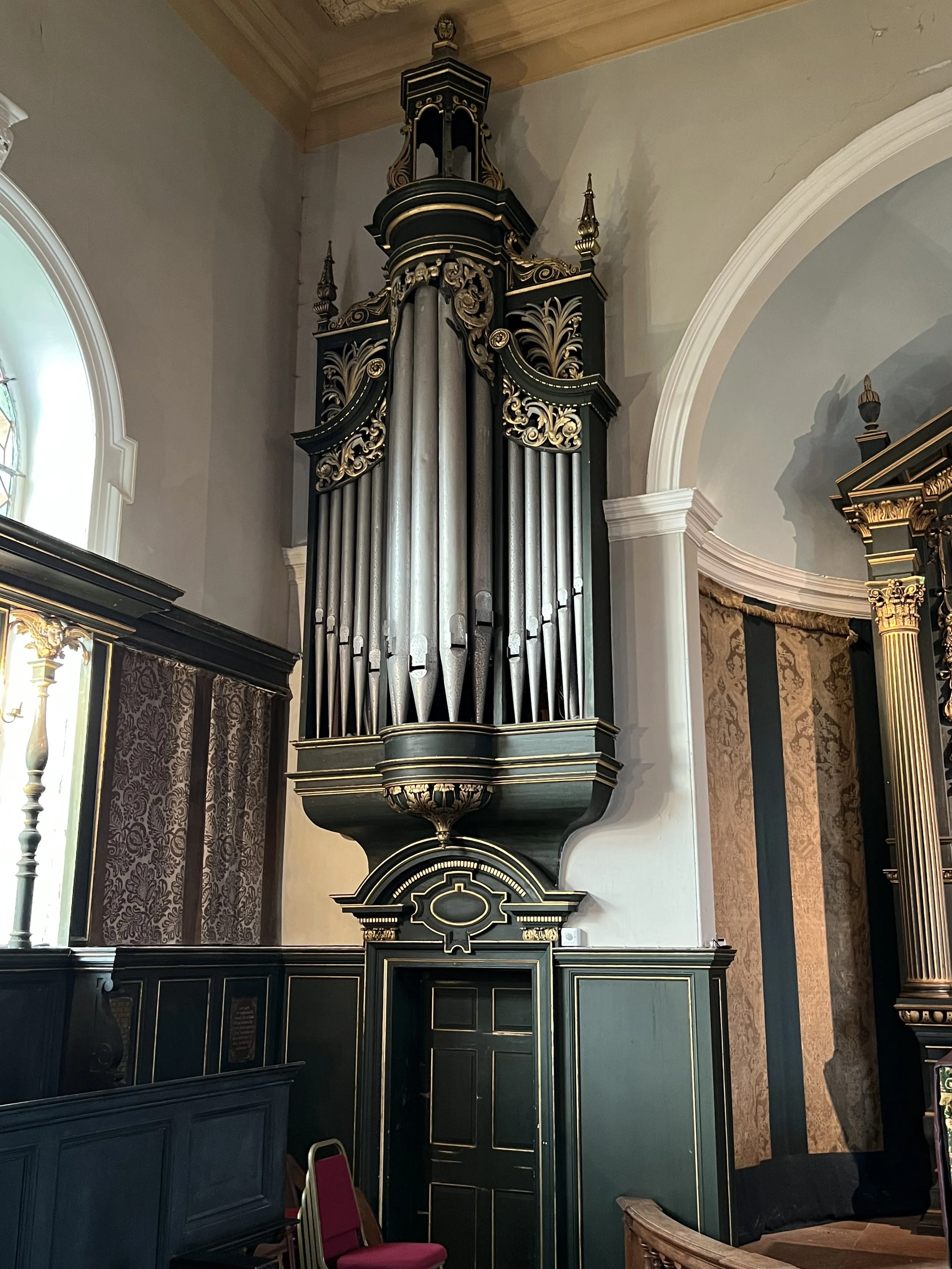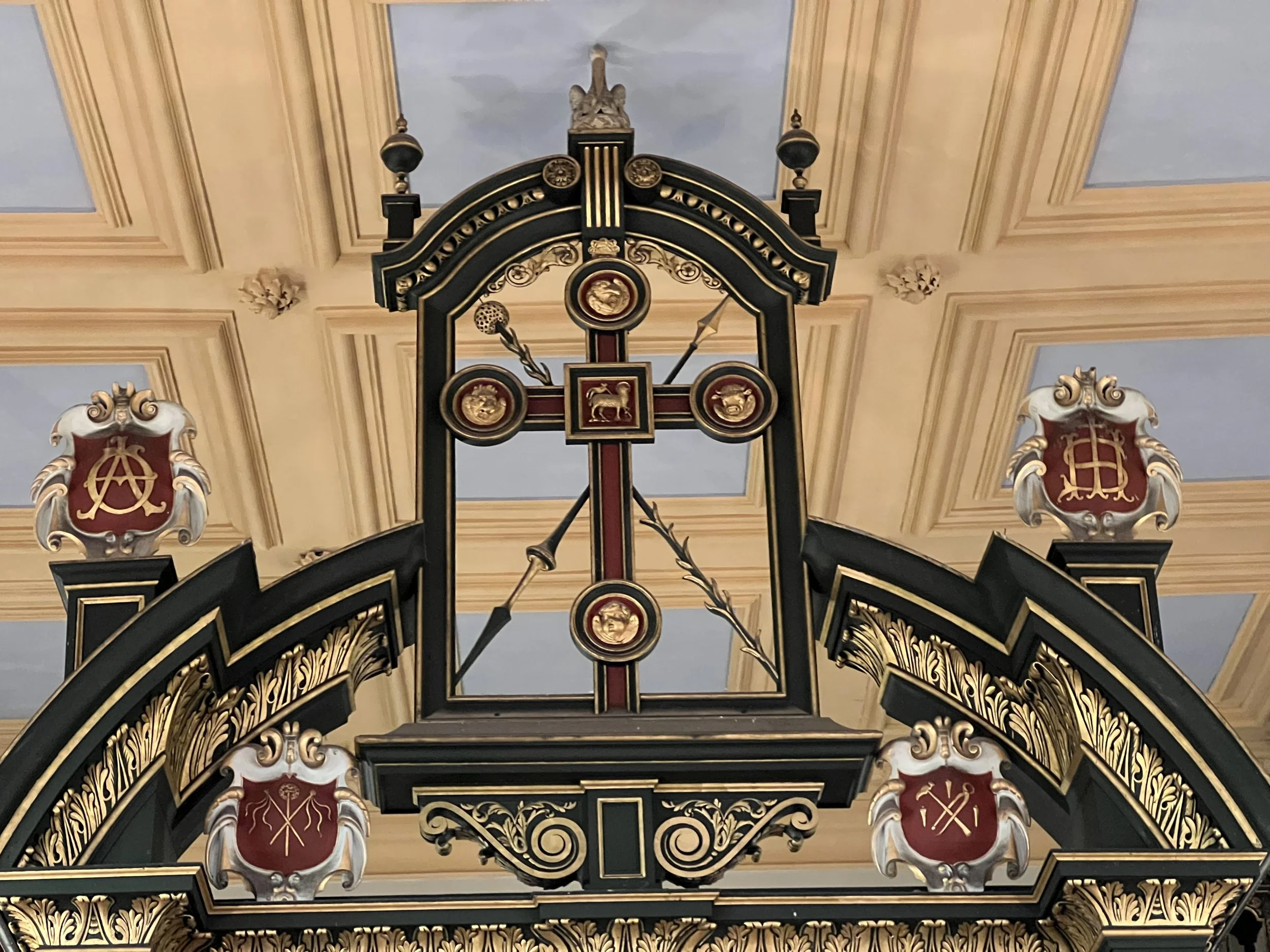The Windows – The stained glass panels in 15th century north Germanic style inset into the four nave windows are by Victor Henry Milner. Milner was a leading stained glass craftsman who worked almost exclusively for Temple Moore. These insets convey the Christian message in their depiction of scenes from Christ’s life, the Nativity, the Adoration of the Magi, the Crucifixion and Mary Magdalene in the Garden of Gethsemane . The scallop shells at the corners of each border signify as a Christian symbol both baptism bringing the lifelong obligation to follow in the way of Christ and heavenly afterlife, but the scallop shell symbol has pre-Christian history too. The surrounding glass panes are the original Georgian ones as are the panes in the other windows.
The unknown Georgian Architect paid attention to details. The nave windows contain only blue and green tinted glass in a chequer board pattern with large diamond shapes forming the border; but the remaining windows contain, in addition, pink tinted glass which turns iridescent when caught by sunlight, and the diamond shaped borders are smaller.
The Interior . The latter half of the 19th century was a period of considerable church building and refurbishment. It is likely that church’s perfect acoustics played a key part in prompting the very musical Lady Cynthia Graham, wife of Sir Richard Graham of Netherby, to take an interest in transforming the interior. Lady Cynthia was probably influential too in securing the services of Temple Moore as the architect; he had undertaken commissions for her father the Earl of Feversham in North Yorkshire. The Florentine ceiling and acanthus leaf decoration on the keystones of the window arches may have dictated the Italianate Baroque scheme as Temple Moore was best known as a Gothic Revivalist. An important feature of Gothic Revival Architecture was the re-introduction of Christian symbols many of which are derived from those of more ancient pagan cultures. The underlying aim of Temple Moore’s design is, as in medieval times, to proclaim the Christian message of man’s salvation through Christ’s death and passion by symbols and images. In its attention to detail the Scheme provides a first class example of the integration of different styles into a unified whole .
The Altar - The Altarpiece blocks the central window of the Church’s Venetian style north window. The painting is a copy of Raphael’s last painting “The Transfiguration” which affirms the Divinity of Christ. The IHS Christogram (a monogram of the first letters of Jesus name from the Greek) above the painting is a further affirmation of the Christian message. The original Painting now hangs in the Vatican.. The Orb with Cross at the top of the frame serves a dual purpose, a symbolic one in signifying God’s dominion over the world and a structural one in fixing the frame into the ceiling joists to give it stability .
The Organ - The Organ to the left of the altar was supplied by Messrs. Brown of Deal. The pipes above the right hand vestry are dummy ones to balance the design. The organ is powered by electric bellows and has been converted to an electronic mechanism
The Screen with its Corinthian Columns and Broken Pediment, Choir Stalls and Altarpiece – were carved by Messrs Martin of London ; installed by Messrs Davidson of Carlisle and painted and gilded by a Longtown firm . The green of the Choir is lightened by the use of azure on the organ cases and white on the faces of the cherubs’ on the grille over the windows.
The Screen Decoration - One large shield contains the monogramed letters AO – Alpha and Omega, the First and the Last - a further symbol for Christ, and the other another IHS Christogram The Cross with a circle on each arm forms a tetramorph (an arrangement of four shapes into a whole); the symbols inside the circles are those of the four gospel writers. Clockwise from the bottom :-
The Man – St Matthew The Lion – St Mark The Eagle – St Luke The Calf – St John
Each symbol represents the different aspect of Christ which that writer’s gospel portrays. The first biblical reference to men with creatures’ faces occurs in the Old Testament in the Vision of Ezekiel. But the idea of a whole creature composed of parts of different creatures with each part having a separate significance has its origins in the Sphinxes of Egypt and the ancient civilisations of Babylon and Assyria. A spear and a reed on a sponge form diagonals behind the Cross. The small shields show nails, a hammer, pliers, scourges (whips) and a reed with a sponge. These and other images from the Passion are repeated in the borders of the stained glass window panels. At the centre of the Cross is the Lamb with the flag, the Agnus Dei symbol , representing Christ’s triumph over death. At the top of the Screen, anchoring the screen to the ceiling joists sits a small pelican with its beak towards its breast; a pose known as “a pelican in its piety” and a medieval symbol for the Eucharist. The pelican was thought to pluck at its breast to draw blood to feed its young. The symbol has its origins in the ancient Egyptian hieroglyph of a pelican which denoted the duties of a father to his children.
The vividly coloured centre rear window is a memorial to Sir Richard and Lady Cynthia Graham. The mallard duck reflect Sir Richard’s love of duck shooting for which the Netherby Estate was famous and the Church, for which Lady Cynthia played such an important part in its refurbishment.
